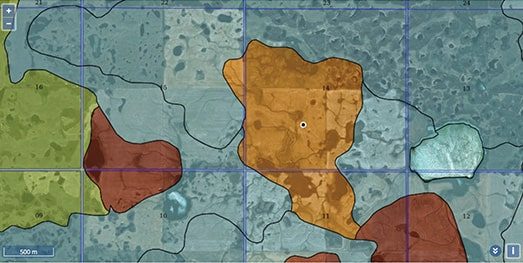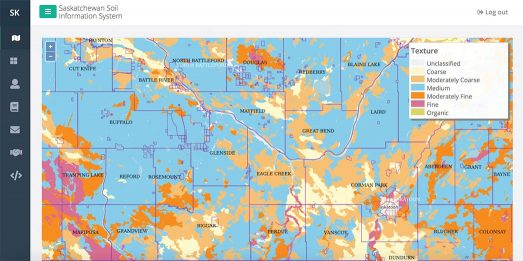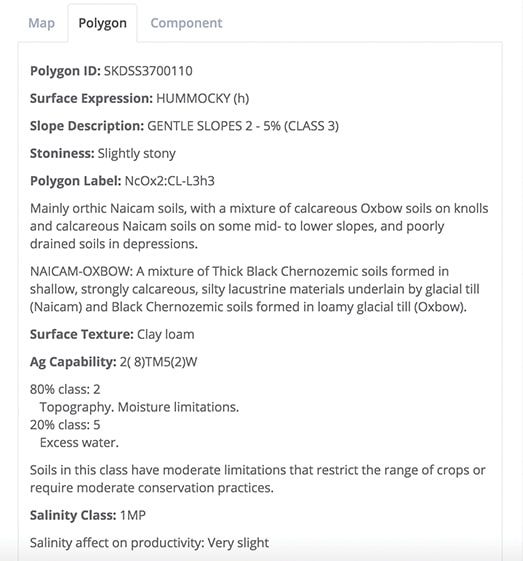Online tool improves access to Saskatchewan soil data
KEY RESULT: Saskatchewan Soil Information System (SKSIS) provides an online and interactive soils resource sksis.usask.ca, helping Saskatchewan farmers make better land-use decisions.
Project title, Principal investigator: “Enhanced Saskatchewan Soil Data for Sustainable Land Management,” Angela Bedard-Haughn, University of Saskatchewan
Funding: SaskCanola, Sask Pulse Growers and Saskatchewan’s Agriculture Development Fund (ADF)
In order to make well-informed land management decisions, including those related to precision agriculture practices, accurate, reliable information about soils and land capability is needed. In the 20th century, Agriculture and Agri-Food Canada (AAFC) together with its provincial partners heavily invested in soil survey, and the results were compiled into AAFC’s Canadian Soil Information System (CanSIS). However, with reduced staffing in CanSIS and an uncertain future for any ongoing soil survey updates, there was a clear need for improved access to high-quality soil data framework.
To fill this need, researchers at the University of Saskatchewan, in collaboration with AAFC and industry, initiated a two-year project to develop a new enhanced data framework to store and access Saskatchewan soil information. The new program, called the Saskatchewan Soil Information System (SKSIS), has made existing Saskatchewan soils information (from CanSIS at a scale of 1:100,000) available to everyone as an online resource, available at sksis.usask.ca. Clicking on a particular location brings up the available information for that area as well as expanded descriptions of the local soil associations. Information about soil type, capability, irrigation potential, texture, salinity, and pH can all be displayed and queried, including compound queries to find soils with a particular combination of properties.
Three sites in Western Saskatchewan (Central Butte, Rosetown and Waseca) were used for testing digital soil mapping (DSM) methods that allow soil information to be displayed at a scale that could be used for precision agriculture applications (1:5,000). Mapping was based upon a five-metre grid digital elevation model obtained from data collected with a fixed wing drone and sophisticated software package. The DSM algorithms then used soil information from in-field samples to produce five-metre grid rasters of soil properties for the fields. All soil properties were successfully mapped with high prediction accuracy and verified by the individual land owners and operators, showing the ability of the DSM to produce layers of spatially enhanced soil information at the field scale.
SKSIS is available for both desktop and mobile users to identify soil properties at a specific location, with mobile access using smartphone GPS technology to establish user location. SKSIS supports the uploading of photos, documents and observations (including detailed soil descriptions), and offers other features such as the ability to change base maps to allow users to associate soil information with landmarks they are familiar with, like highways or farm yards. The information can be used alone to better understand variability in the field and assist with nutrient planning, or used with variable rate equipment or other precision agriculture technologies for additional value.
Funding for Phase 2 research has been approved to continue to build on SKSIS, enhancing its usability and accessibility for a wider audience and providing greater refinement of the soils information via broader application of digital soil mapping technologies and development of new decision support systems.








